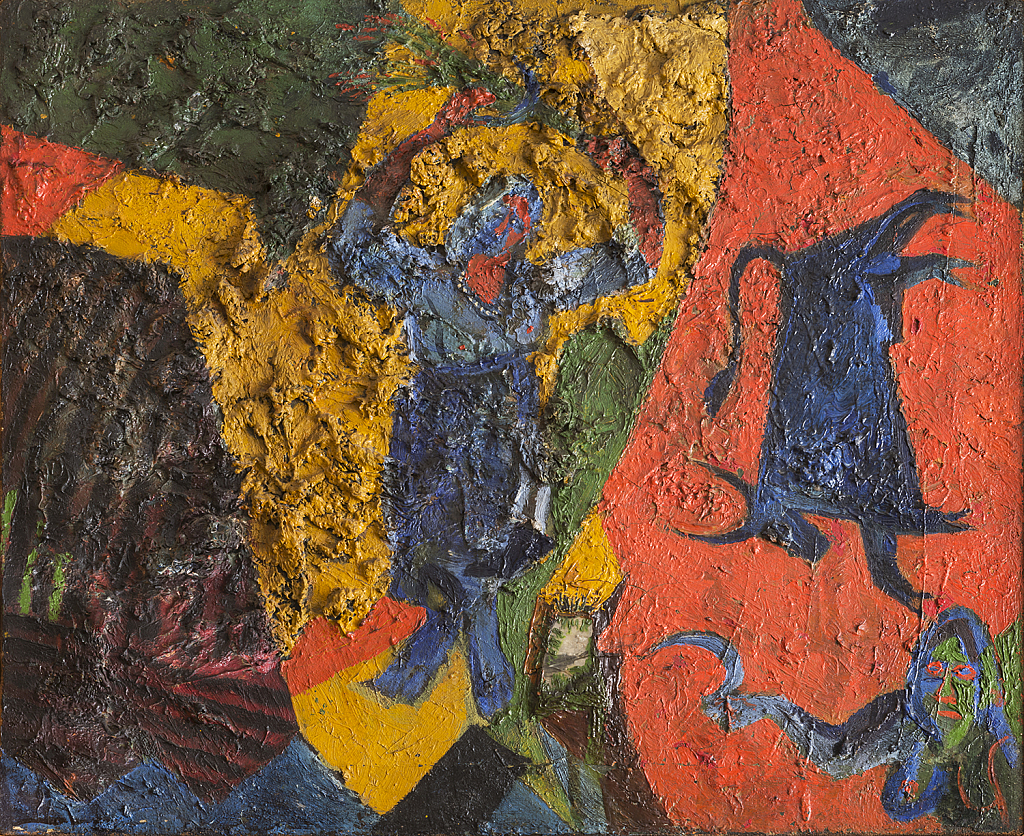
Collection of Marina Kashuro and Valery Dudakov
In 1915, Burliuk moved to Bashkiria due to the need to support his family. There he is engaged in the supply of hay for the Russian army. He lives at the station Iglino near Ufa and continues to paint from time to time. This period includes the work "Reaper", which the artist presented to the public in 1916 at the exhibition "Jack of diamonds". In this picture the surface is especially expressive. Varying the plastic possibilities of paint — from the thin-layer painting, when the canvas is only slightly "rubbed" with a brush, to the powerful convex layers, as if Burliuk illustrates his own statements with his canvases, for instance, "the development of free New Painting will undoubtedly entail the further development of texture and the time may be close, when for many paintings it alone will serve as the subject of the goal.” Or: "The painting used to see, now it feels."
Burliuk inserts a piece of glass into the thickness of the texture and creates not so much a picture as a pictorial collage. This is not an isolated example of such inserts. Frequently the artist mixed paint with sand, sprinkled paintings with sawdust and pasted metal parts on canvas, playing with contrasts of materials. In the new Russian painting David Burliuk was one of the first, who realized the formative role of texture and structure. "Painting borders with sculpture plastically" — said Burliuk, referring to the impasto of Rembrandt, in whose artworks he noted "mountains of paint."



